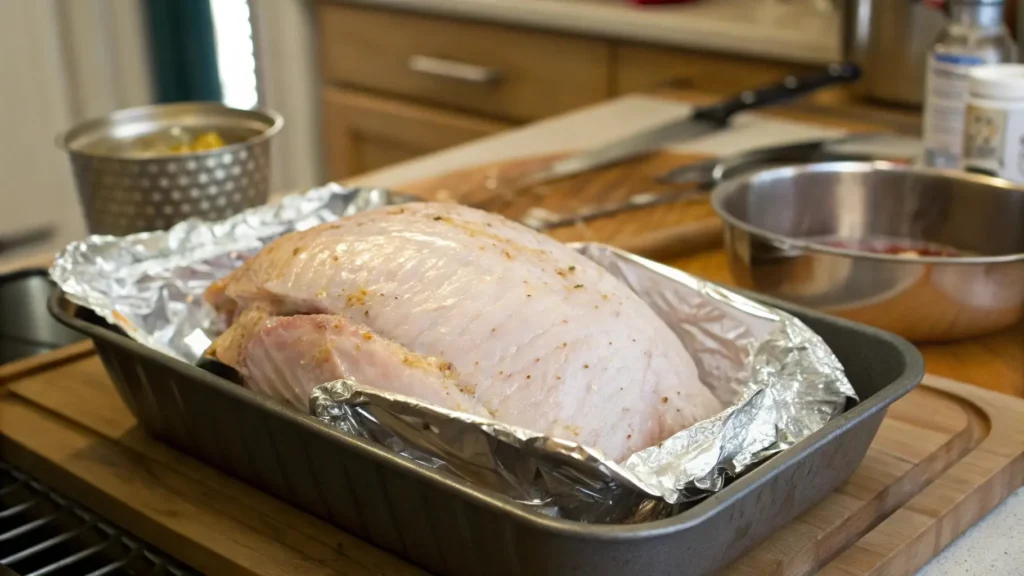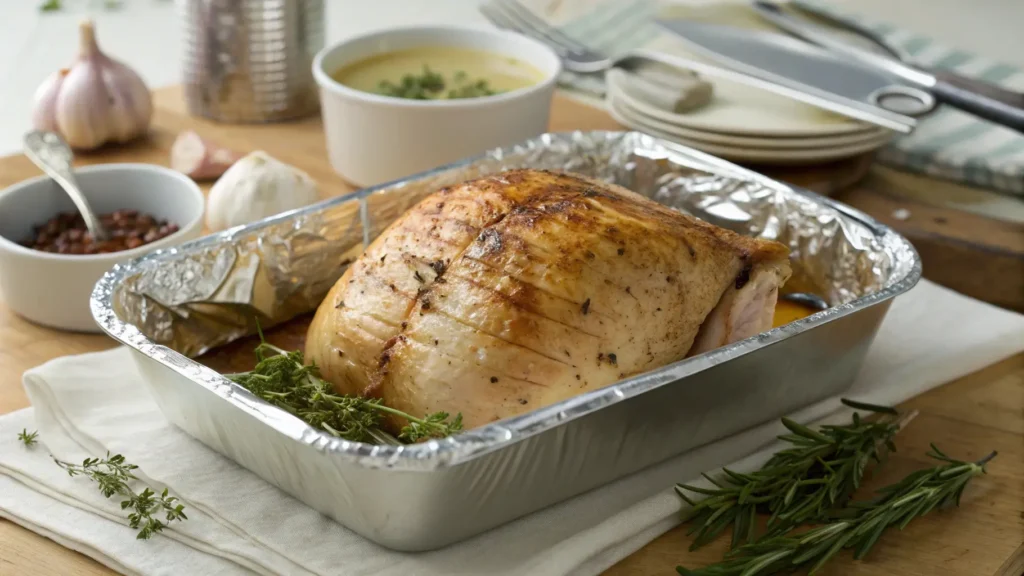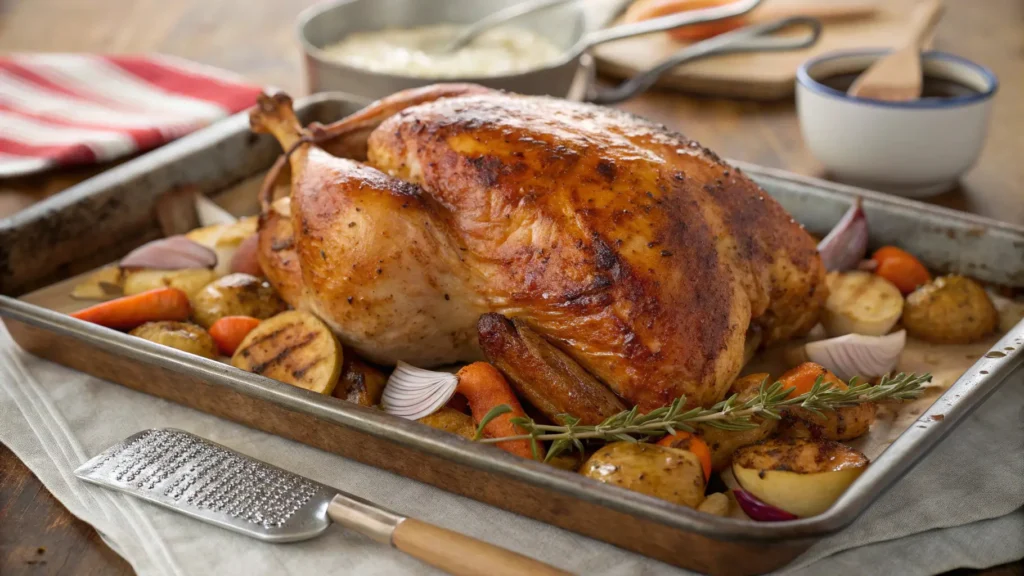When it comes to preparing a perfectly roasted turkey breast, there’s one question that divides home cooks: Should turkey breast be covered or uncovered when roasting? This seemingly simple query holds the key to achieving a moist, flavorful, and evenly cooked dish. In this article, we’ll explore the nuances of roasting turkey breast, breaking down the pros and cons of covered versus uncovered methods, expert recommendations, and essential tips to guide your culinary journey.

Introduction to Roasting Turkey Breast
What Makes Turkey Breast Special?
Turkey breast is celebrated for its tender, lean meat that pairs wonderfully with a variety of seasonings and sides. Unlike the whole turkey, the breast portion is more manageable to cook, making it a go-to choice for smaller gatherings or weeknight dinners. However, its low-fat content also means it’s prone to drying out if not cooked correctly. Striking the perfect balance between moisture and flavor is where the art of roasting truly shines.
Common Concerns in Turkey Breast Roasting
Whether you’re a seasoned cook or a beginner, you’ve likely faced questions like: How do I keep my turkey breast from drying out? or Should I use foil while roasting? These concerns stem from the inherent challenge of maintaining juiciness while achieving that desirable golden crust. Other considerations include cooking time, oven temperature, and whether basting is essential.
As we unravel the covered versus uncovered roasting debate, we’ll tackle these questions head-on, offering practical advice to help you roast turkey breast like a pro. The key lies in understanding how different methods impact texture, flavor, and overall cooking success. Stay tuned as we explore these details in-depth in the next sections!
Understanding Roasting Techniques
Covered vs. Uncovered Roasting: An Overview
When considering should turkey breast be covered or uncovered when roasting, it’s crucial to understand what each method entails. Covering the turkey breast, often with aluminum foil or a lid, traps moisture, creating a steam-filled environment that helps prevent the meat from drying out. On the other hand, roasting uncovered allows the heat to circulate freely, encouraging the skin to crisp up and develop a rich, golden-brown finish.
Both methods have their merits, but their suitability largely depends on what you value most in your roasted turkey breast—moisture or a crisp texture. For many, finding a balance between these two outcomes is the ultimate goal.
How Roasting Methods Affect Juiciness and Texture
Covered roasting is particularly effective at maintaining the turkey breast’s natural juices. This method creates a moist cooking environment, reducing the risk of overcooking the lean meat. However, it can lead to a pale or soggy exterior if the cover isn’t removed in time.
Conversely, roasting uncovered enhances flavor through the Maillard reaction, which is responsible for the deliciously browned crust. But beware—without adequate moisture management, this method can result in dry, tough meat. Understanding these trade-offs is key to mastering your roasting technique.
Temperature and Time Variations
Cooking temperature and duration play vital roles in both methods. Covered roasting may require slightly lower temperatures, as the trapped steam speeds up the cooking process. Meanwhile, uncovered roasting often benefits from an initial high heat to develop a crust, followed by lower heat for even cooking.
Knowing when to adjust the temperature or switch between covered and uncovered roasting can make all the difference in your turkey breast’s final quality. As we’ll see in the next section, each approach has distinct advantages and drawbacks.
The Pros and Cons of Covered Roasting

Advantages of Covered Roasting
Covering the turkey breast provides a safety net against drying out. By sealing in moisture, this method ensures a tender, juicy result, even for novice cooks. Additionally, it simplifies the cooking process—no need for frequent basting, as the trapped steam naturally bastes the meat.
Another perk is the flexibility it offers in seasoning. The cover locks in the flavors, allowing the herbs and spices to penetrate deeply into the turkey. This approach is especially useful when cooking in drier climates or at high altitudes, where retaining moisture can be a challenge.
Challenges with Covered Roasting
Despite its benefits, covered roasting has its drawbacks. The most common complaint is that it can prevent the skin from crisping up, leaving the turkey breast with a less appealing appearance. To counter this, many cooks remove the cover during the final stages of cooking to achieve a golden finish. However, timing this correctly can be tricky, and missteps may lead to uneven cooking.
Covered roasting also requires careful attention to heat distribution. If the cover is too tight, it might lead to oversteaming, which can make the meat mushy. Furthermore, excessive condensation under the cover can dilute the natural flavors.
Ideal Situations for Covered Roasting
Covered roasting shines when moisture retention is your top priority. This method works wonders for those who prefer a melt-in-your-mouth texture over crispy skin. It’s also ideal for preparing turkey breast in advance, as the meat stays tender even after reheating.
For home cooks asking, should turkey breast be covered or uncovered when roasting, the covered approach is a reliable choice for moist and flavorful results. However, as we’ll explore next, the uncovered method offers its own unique advantages.
The Pros and Cons of Uncovered Roasting

Benefits of Uncovered Roasting
Roasting turkey breast uncovered is a favorite among those who love a crispy, golden exterior. By exposing the skin directly to the heat, this method allows for the Maillard reaction, producing a flavorful and visually appealing crust. The uncovered approach also offers more control over browning, making it easier to achieve an evenly roasted turkey.
Another key advantage is flavor concentration. As the juices evaporate, they leave behind a more intense taste, perfect for rich, savory meals. If you’re aiming for presentation-worthy results, this technique ensures your turkey breast steals the spotlight.
Potential Drawbacks of Uncovered Roasting
Despite its benefits, uncovered roasting isn’t without challenges. The biggest drawback is the increased risk of dryness. Without a protective cover, the lean turkey breast loses moisture faster, especially at high temperatures. This can leave the meat tough or overcooked if not monitored closely.
Additionally, uncovered roasting requires more attention. Regular basting or the use of a drip pan becomes essential to retain some moisture and enhance the flavor. These extra steps can be time-consuming and might intimidate less experienced cooks.
When to Opt for Uncovered Roasting
Uncovered roasting is ideal when your top priority is achieving a picture-perfect crust. This method works best when you have ample time and tools, like a reliable thermometer, to ensure the meat stays juicy. For those debating should turkey breast be covered or uncovered when roasting, the uncovered method shines for special occasions where presentation and flavor take center stage.
If you’re inspired to experiment, check out this Creole Butter Turkey Breast Recipe for a flavorful take on uncovered roasting.
Expert Recommendations for Perfect Results
Tips from Culinary Experts
Culinary experts often suggest blending the two methods for optimal results. Start with the turkey breast covered to lock in moisture during the initial stages of cooking. Once the meat is nearly done, remove the cover to let the skin crisp up. This hybrid technique combines the best of both worlds.
For even better results, use a meat thermometer to monitor the internal temperature. Experts recommend roasting turkey breast until it reaches 165°F at its thickest point, ensuring it’s fully cooked but still juicy.
Combining Methods for Optimal Results
Alternating between covered and uncovered roasting can eliminate much of the guesswork. Begin by tenting the turkey with foil to prevent excessive browning. In the final 20 minutes, uncover it and increase the oven temperature slightly for that sought-after golden finish.
Using Foil or Tent Techniques
Foil is a game-changer in turkey roasting. A loose foil tent can shield the breast from direct heat while still allowing airflow for even cooking. For those asking, should turkey breast be covered or uncovered when roasting, this method offers a compromise. It’s easy to adjust and ensures you don’t sacrifice moisture for a crispy crust.
For more delicious turkey ideas, visit How to Get Flavor Into Turkey Breast. This article provides inspiration for seasoning and enhancing your turkey dishes.
FAQs on Roasting Turkey Breast
Should Turkey Breast Be Cooked at a High or Low Temperature?
The answer depends on your roasting method. Cooking at a low temperature, around 325°F, ensures even cooking and prevents the turkey from drying out, especially if you’re roasting uncovered. For those who want a crisp, golden exterior, starting at a high temperature (400°F) for the first 15–20 minutes, then lowering the heat, is a popular technique. This approach balances moisture retention and crust development.
If you’re wondering, should turkey breast be covered or uncovered when roasting, lower temperatures pair well with covered roasting, while higher temperatures are ideal for uncovered methods.
How Do You Keep Turkey Breast Moist?
Keeping turkey breast moist can be a challenge, but it’s not impossible. Use a meat thermometer to avoid overcooking. Basting periodically with its juices or a flavorful broth also helps. If you opt for covered roasting, the steam created under the foil or lid locks in moisture naturally.
For uncovered roasting, brining the turkey beforehand or adding butter under the skin can prevent dryness.
What Are the Best Tools for Roasting Turkey Breast?
Invest in a roasting pan with a rack to allow airflow. A meat thermometer is non-negotiable for perfect doneness. And for those who can’t decide should turkey breast be covered or uncovered when roasting, having foil handy offers flexibility to switch methods mid-cooking.
Conclusion and Key Takeaways
Summary of Covered vs. Uncovered Debate
The choice between covered and uncovered roasting depends on your goals. Covered roasting prioritizes moisture and simplicity, while uncovered roasting delivers a crisp, golden skin and rich flavor. A hybrid method often strikes the best balance, catering to both preferences.
Final Advice for Roasting Turkey Breast
So, should turkey breast be covered or uncovered when roasting? Ultimately, the answer lies in your priorities—whether it’s juicy meat or a stunning presentation. With proper tools and techniques, you can enjoy a perfectly roasted turkey breast every time. Experiment, find your favorite method, and let the oven work its magic!
